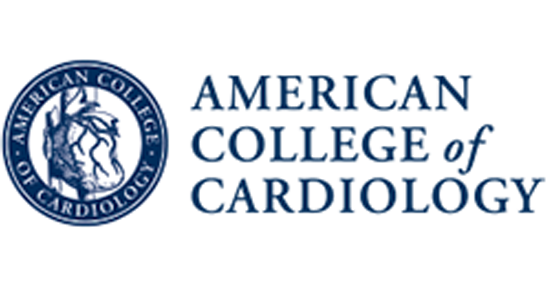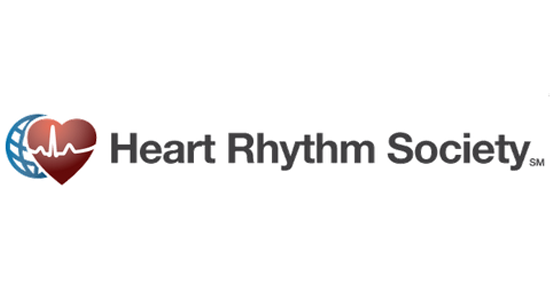HeartRhythm主编—陈鹏生教授语音速递(十一月刊 英文版)


Peng-Sheng Chen
Hello, this is Dr. Peng-Sheng Chen, the Editor-in-Chief of Heart Rhythm. The November issue is a focus issue on Pediatric and Congenital Electrophysiology.
The first article is titled“Management and outcomes of atrial fibrillation in 241 healthy children and young adults: Revisiting "lone" atrial fibrillation-A multi-institutional PACES collaborative study”. This is a retrospective multicenter cohort study including 241 patients from 13 congenital heart centers. Patients ≤21 years of age with documented AF from 2004 to 2018 were included. AF recurred in 94 patients (39%) during 2.1 years of follow-up. Predictors of AF recurrence were family history in a first-degree relative <50 years of age and longer PR interval in sinus rhythm. Ablating non-AF substrate with SVT improved freedom from AF recurrence. The authors conclude that recurrence of AF in the pediatric population is common. Ablation of accessory pathways and other reentrant targets was the only intervention that decreased AF recurrence in children and young adults.
Next up is “Evaluation of age at symptom onset, proband status, and sex as predictors of disease severity in pediatric catecholaminergic polymorphic ventricular tachycardia”. This is a multicenter cohort including 133 pediatric CPVT patients. Proband status, rather than age at symptom onset or sex, was an independent predictor of time to first cardiac event. Event risk after diagnosis was 48% (32/67) in patients on β-blocker or flecainide alone vs 10% (5/48) in patients on β-blocker plus flecainide and/or left cardiac sympathetic denervation. The authors conclude that proband status, but not age at symptom onset or male sex, independently predicted an earlier onset of cardiac events.
The next article is “Mechanisms and outcomes of catheter ablation for biatrial tachycardia in adults with congenital heart disease”. All ACHD undergoing catheter ablation for macroreentrant atrial tachycardia over a 10-year period were evaluated for evidence of biatrial tachycardia. Among 263 ACHD, biatrial tachycardia was identified at 11 procedures in 10 patients. During catheter ablation, these arrhythmias could be targeted at an interatrial connections for normally septated atria and at a conventional critical isthmus after Senning and lateral tunnel Fontan operations.
Up next is “Accessory pathway ablation in Ebstein anomaly: A challenging substrate”.The purpose of this study was to compare outcomes of AP ablation in Ebstein anomaly in an early (1990-2004) vs a recent (2005-2019) era and identify variables associated with recurrence. The authors identified 76 patients with median age of 9 years. Of these patients, 52 had AP alone, 12 had atrial flutter, 3 had atrioventricular nodal reentrant tachycardia, and 9 had accessory pathway plus at least 1 additional arrhythmia. Acute success for accessory pathway first procedure was 89%. Recent era ablations had significantly lower recurrence rates at 1 year. Younger age at time of electrophysiological study and ablation era predicted recurrence. The authors conclude that outcomes for accessory pathway ablation in patients with Ebstein anomaly have improved, but there is still a relatedly high recurrence risk requiring repeat procedures.
The following article is “Impact of specialized electrophysiological care on the outcome of catheter ablation for supraventricular tachycardias in adults with congenital heart disease: Independent risk factors and gender aspects”. All ACHDs registered in a database of one of the largest German health insurers (≈9.2 million members) who underwent catheter ablation for SVT were analyzed. Of 38,892 ACHDs 16 years or older, 485 underwent catheter ablation for SVT. The authors found that catheter ablation for SVT is increasingly performed in ACHDs, especially for atrial flutter and atrial fibrillation. Patients with moderate and severe complexity congenital heart defects and female ACHDs benefit from upfront referral to specialized congenital heart centers for catheter ablation. Centralization of care for ACHD arrhythmias should thus be advocated.
The next article is “Atrial pacing in Fontan patients: The effect of transvenous lead on clot burden”. This was a retrospective cohort study of all transvenous permanent pacemaker implantations in Fontan patients followed between 2000-2018. The cumulative incidence of clot was highest in patients with transvenous permanent pacemaker, followed by patients with epicardial permanent pacemaker and no permanent pacemaker. In multivariable analysis, anticoagulation and/or antiplatelet therapy were protective against clot and resulted in reduction of clot risk by 3-fold. The authors conclude that Fontan patients with transvenous permanent pacemaker had a higher but not statistically significant incidence of clot compared to those with no permanent pacemaker and epicardial permanent pacemaker. Patients treated with warfarin/aspirin had lower clot risk.
Up next is “Substrate characterization of the right ventricle in repaired tetralogy of Fallot using late enhancement cardiac magnetic resonance”. The purpose of this study was to identify the CMR algorithm that best fits with electroanatomic mapping (EAM) in 10 patients with repaired tetralogy of Fallot. The 3D RV substrate reconstructions were created using an adjustable percentage of the maximum voxel signal intensity (MSI) of the scar region to define the threshold between core, transitional zone, and healthy tissue. The best match between core and scar was obtained at 65% MSI cutoff. Agreement on anatomic isthmi identification was best at 60% MSI cutoff, which identified 95% of isthmi and achieved a total fit in 90% of patients. The authors conclude that characterization of the RV substrate by postprocessing LE-CMR images in repaired tetralogy of Fallot patients is feasible and could help in planning target ablation.
The following article is “Predictors and outcomes of heart block during surgical stage I palliation of patients with a single ventricle: A report from the NPC-QIC”. The purpose of this study was to study patient and surgical risks of heart block and its effect on 12-month transplant-free survival in patients with a single ventricle. In total, 1423 patients were identified, of whom 28 (2%) developed second degree or complete heart block during their surgical admission. Associated risk factors for block included heterotaxy syndrome (odds ratio [OR] 6.4) and atrial flutter/fibrillation. At 12 months of age, 43% (12/28) of patients with heart block died and were more likely to experience mortality at 12 months than patients without block. The authors conclude that complete heart block after stage I palliation represents an additional risk of poor outcomes in this high-risk patient population.
The last article of the focus issue is the “2021 PACES Expert Consensus Statement on the Indications and Management of Cardiovascular Implantable Electronic Devices in Pediatric Patients”. This document is expected to provide support for clinicians and patients to allow for appropriate CIED use, appropriate CIED management, and appropriate follow-up in pediatric patients.
The first Regular Issue article is “Epicardial course of the musculature related to the great cardiac vein: Anatomical considerations and clinical implications for mitral isthmus block after vein of Marshall ethanol infusion”. One hundred consecutive patients underwent 2-step procedure. Step 1 is the VOM ethanol infusion and step 2 is the endocardial linear ablation from the mitral annulus to the left inferior pulmonary vein. After VOM ethanol infusion and endocardial ablation, mitral isthmus block occurred in 51 patients (51%). Pacing maneuvers and activation sequences demonstrated an epicardial gap via the VOM in 2 patients (2%) and via the great cardiac vein in 47 patients (47%). Global success rate of mitral isthmus block was 98%. The authors conclude that with the advent of VOM ethanol infusion, residual mitral isthmus gaps are mostly eliminated within the first centimeter of the great cardiac vein. Thorough mapping of the entire circumference of the great cardiac vein wall can help identify these epicardial gaps.
Next up is “Reappraisal of electrocardiographic criteria for localization of idiopathic outflow region ventricular arrhythmias”. One hundred one patients undergoing catheter ablation of RVOT or aortic sinus of Valsalva (ASV) ventricular arrhythmias with a left bundle branch block, inferior axis morphology were studied. For the differentiation of RVOT from ASV ventricular arrhythmias, the positive predictive values and negative predictive values for all tested ECG criteria ranged from 42% to 75% and from 71% to 82%, respectively, with the V2S/V3R index having the largest area under the curve of 0.852. Morphological QRS criteria in leads V1 through V3 did not localize ASV ventricular arrhythmias. The authors conclude that ECG criteria for differentiating right from left ventricular outflow region ventricular arrhythmias and for localizing ASV ventricular arrhythmias have a limited accuracy.
The next article is “Catheter ablation of premature ventricular complexes associated with left ventricular false tendons”. From a total of 2284 patients with idiopathic PVCs who underwent catheter ablation at 6 institutions in China, 10 patients (2.9%) with PVCs associated with false tendon were retrospectively reviewed and enrolled in the present study. The PVCs were successfully eliminated by ablation in all patients. The target sites were confirmed to be related to false tendon. The origin of PVCs was located at the attachment of the false tendon to the papillary muscle, LV septum, or LV apex. At the target site, high-frequency Purkinje potentials were observed preceding local ventricular activation in 7 patients. The authors conclude that LV false tendon can be associated with PVCs, which can be cured by RF catheter ablation. An intracardiac echo-guided electroanatomical approach should be considered to improve the safety and feasibility of this procedure.
The following article is “Discrete sites of frequent premature ventricular complexes cluster within the infarct border zone and coincide with high frequency of delayed afterdepolarizations under adrenergic stimulation”. Anterior-septal wall MI was induced by 120 minutes of coronary occlusion followed by reperfusion in pigs. After 4 weeks, electroanatomic mapping combined with imaging was performed. PVCs originated from the MI border zone and occurred at discrete areas with clusters of PVCs within the border zone. At these sites, frequent delayed afterdepolarizations and occasional associated spontaneous action potentials translating to a PVC were present. Cardiomyocytes isolated from the MI border zone exhibited more spontaneous action potentials than cardiomyocytes from remote regions. Sensitivity to adrenergic stimulation was increased in MI, in vivo and in cardiomyocytes. In awake, freely moving MI animals, frequent PVCs, ventricular arrhythmia, and sudden cardiac death occurred spontaneously at moderately elevated heart rates. The authors conclude that post-MI, arrhythmias initiate from discrete vulnerable areas within the border zone, where delayed afterdepolarizations, related to increased adrenergic response of border zone cardiomyocytes, can generate PVCs.
The next article is “Similarities and differences in the arrangement of the atrioventricular conduction axis in the canine compared to the human heart”. The authors prepared 33 human and 5 canine hearts for serial histologic sections of the atrioventricular conduction axis. All canine hearts lacked an inferoseptal recess, with the noncoronary leaflet of the aortic valve and the right fibrous trigone having direct attachments to the septal surface of the left ventricular outflow tract. This correlated with an extensive nonbranching component of the ventricular conduction axis, which skirted half of the noncoronary aortic sinus. In the human hearts with an inferoseptal recess, the relatively shorter nonbranching bundle is embedded within the fibrous tissue forming its right wall. In conclusion, the authors found a major difference between canine and the majority of human hearts, namely, the presence or absence of an inferoseptal recess. When this recess is absent, as in the canine heart and in some human hearts, a greater proportion of the atrioventricular conduction axis is found within the circumference of the subaortic outflow tract.
Up next is “Impacts of frailty on heart rate variability in aging mice: Roles of the autonomic nervous system and sinoatrial node”. HRV was reduced in aged mice compared to younger mice; however, there was substantial variability within age groups. In contrast, HRV was strongly correlated with frailty index score regardless of chronological age. The authors conclude that HRV is reduced in aging mice in association with a shift in sympathovagal balance and increased intrinsic sinoatrial node beating variability; however, HRV is highly variable within age groups. HRV was strongly correlated with frailty, which was able to detect differences in HRV separately from chronological age.
The above original articles are followed by a Hands-on article titled “How to Perform an Epicardial Ventricular Tachycardia Ablation: A Contemporary and Practical Approach”. There is a Point-of-View written by Dr Meleze Hocini titled “Radiofrequency ablation of ventricular fibrillation”. This article is the 11th entry in our series of articles to celebrate the 30th year of RF ablation.
I hope you enjoyed this podcast. For Heart Rhythm, I’m the Editor-In-Chief, Dr. Peng-Sheng Chen.











